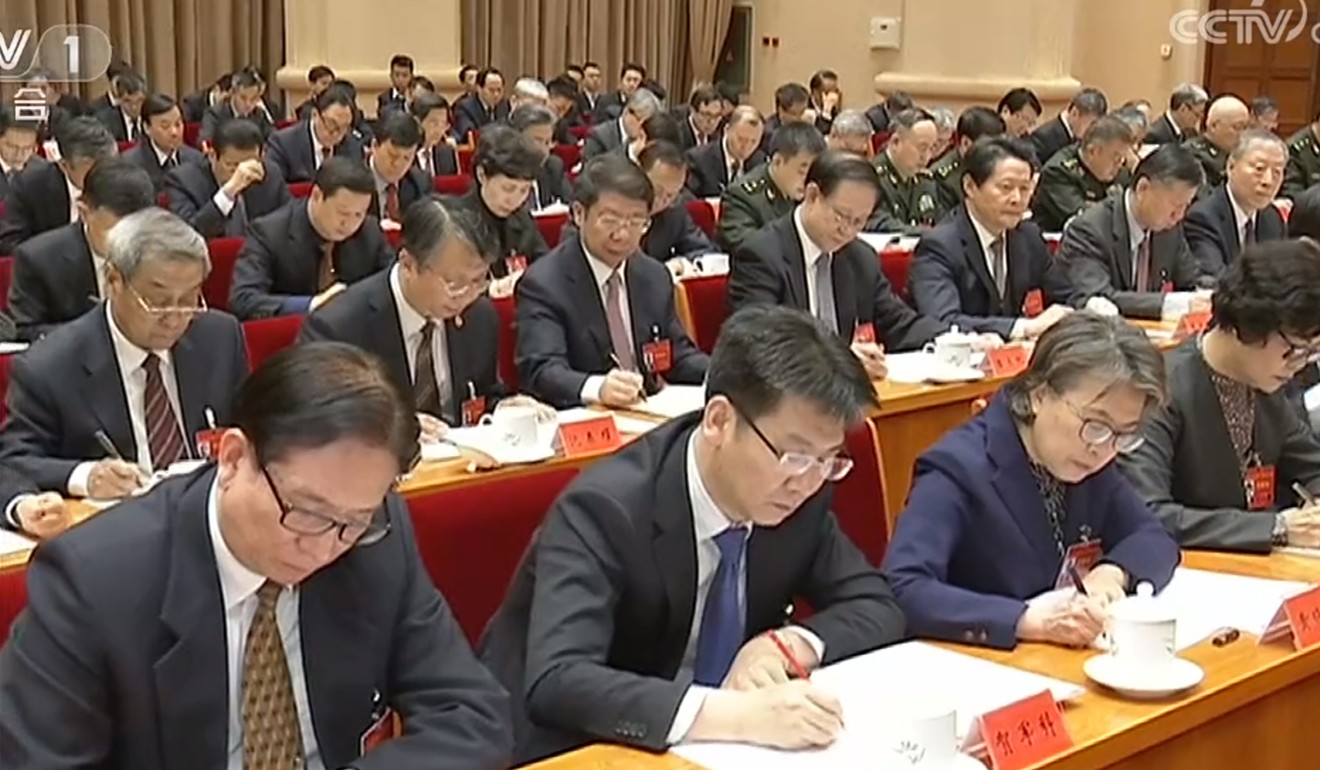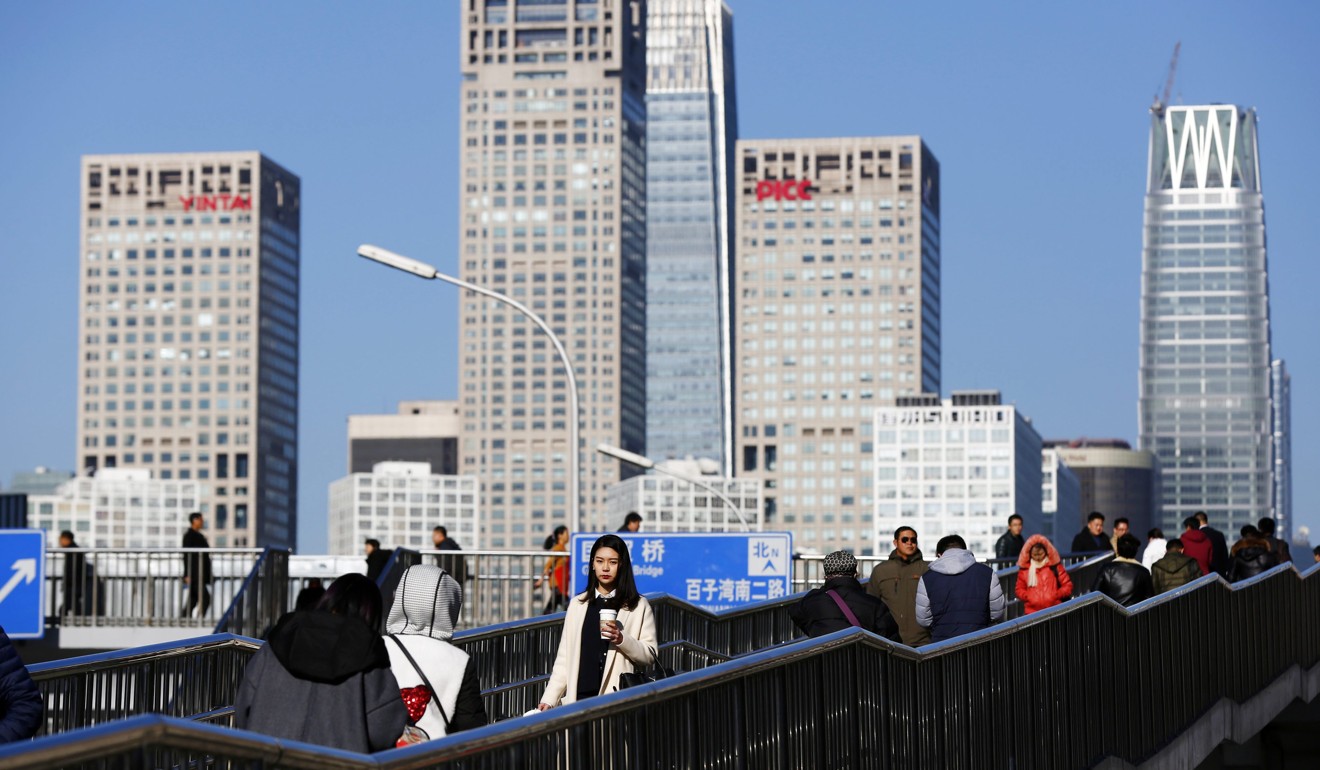
China’s industrial profits drop for first time in three years due to trade war impact
- Figures fall 1.8 per cent in November from a year earlier after industrial profit growth had decelerated in each of the previous seven months
- National Statistics Bureau data is in line with other weak economic activity data for November including retail sales, industrial production and foreign direct investment

China’s industrial profits declined in November for the first time in nearly three years, reflecting the continued slowdown in the economy due largely to the effects of the trade war with the United States.
The 1.8 per cent decline last month compared to a year earlier, the first drop since December 2015, comes after industrial profit growth had decelerated in each of the previous seven months, according to data released by the National Statistics Bureau (NBS) on Thursday.
The contraction in industrial profit is in line with other weak economic activity data for November after retail sales growth slowed to a 15-year low, industrial production grew at the slowest rate in 10 years and foreign direct investment fell sharply compared to a year earlier.
This suggests the growth of the world’s second largest economy will slow further in the fourth quarter from the decade-low gross domestic product (GDP) growth rate of 6.5 per cent in the third quarter.
The figures are the only data released concerning profit for China’s industrial sector but are seen as a reliable indicator, even though they only concern state-owned and private industrial enterprises with an annual business revenue above 20 million yuan (US$2.90 million), classified as having “scaled production”.

The growing economic pressures have forced Beijing to introduce a range of policy measures to shore up the consumer and business sentiment to stabilise growth.
Last week’s meeting of the Central Economic Work Conference, the gathering of top government officials to set the economic policy priorities for next year, said the government would rely on deeper tax cuts and larger fiscal spending to manage economic headwinds, while pushing forward to at least de-escalate the trade war with the US.
“Due to the slowdown in industrial production, the cooling of producer price growth, rising costs, and other factors, industrial profit fell from a year ago in November,” said He Ping, a statistics bureau officer.
China’s industrial enterprises still booked a combined profit of 6.1 trillion yuan (US$885 billion) for the first 11 months of the year, which was an 11.8 per cent increase from the same period of 2017, but November’s decline checked the growth rate from the 13.6 per cent increase seen from January to October.
State-owned industrial enterprises made a combined profit of 1.8 trillion yuan (US$261 billion) in the first 11 months of the year, up 16.1 per cent from the same period of last year, but the growth pace slowed from 20.6 per cent in January to October.
Profits for private industrial enterprises grew to 10 per cent in January-November from 9.3 per cent in the first 10 months of the year, reaching 1.58 trillion yuan.
Operating costs for private industrial enterprises were 25.90 trillion yuan during the first 11 months of the year, 4.9 trillion yuan higher than the cost of their state-controlled peers.
“The slowdown in industrial profit growth was mainly led by state-owned enterprises, where it slowed to 16.1 per cent year on year in year-to-date terms from 20.6 per cent in October,” economists led by Lu Ting from Nomura International in Hong Kong wrote in their latest research note.
They expect the downturn in industrial profit growth to extend into 2019, given weakening domestic demand, the continued credit downcycle and an escalation in the trade war.
“We maintain our call for more substantial tax cuts in the quarters ahead in an effort to stem the growth slowdown,” the note added.
Economists led by Maggie Wei from Goldman Sachs Gao Hua Securities agreed industrial profit growth would continue to face headwinds.
“Both industrial production growth and [producer price index] inflation to soften next year, especially in the first quarter,” they wrote.

In the past, the industrial profit data has caused confusion and deepened scepticism about the validity of China’s economic data.
In June, the NBS announced that Chinese industrial enterprises with “scaled production” contributed a combined profit of 2.7 trillion yuan between January and May, an increase of 16.5 per cent from the same period last year.
But for the same period in 2017, the NBS said the combined profits was 2.9 trillion, meaning a drop of almost 7 per cent.
The bureau explained it only compares firms that were included in the data sample, and it will adjust the sample periodically during the year, adding or deleting companies depending on whether they rise above or fall below the minimum revenue threshold.
Shen Jianguang, chief economist at JD Finance, wrote in a recent note that the lack of trust in China’s economic data had shaken public confidence in the economy.
“Increasing the transparency of economic data, analysing in-depth and interpreting the figures that contradict each other, these are what the authorities should do in the future,” he said.